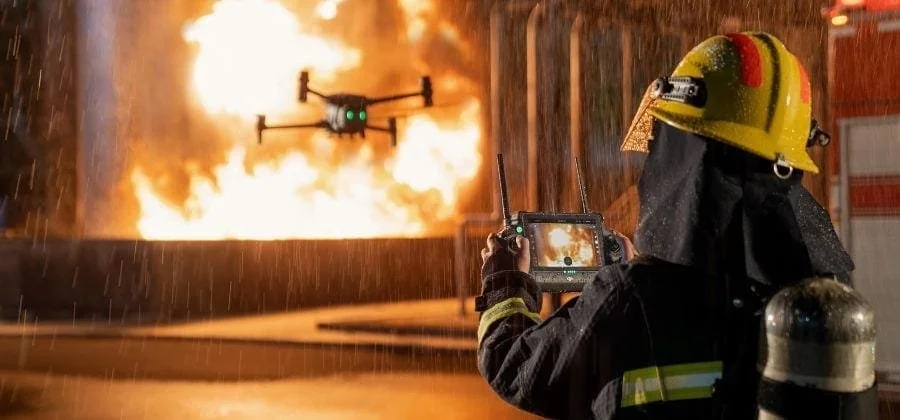How Drones Are Revolutionizing Firefighting Operations.
As wildfires become more frequent and urban development pushes closer to fire-prone areas, fire departments across the globe are turning to advanced technology for support — and drones are quickly becoming one of the most valuable tools in the arsenal. With the ability to provide aerial views, thermal imaging, and real-time intelligence, drones are reshaping how first responders detect, monitor, and fight fires safely and effectively.
Eyes in the Sky: Aerial Intelligence in Real Time
One of the greatest advantages drones offer during firefighting is the ability to gain real-time situational awareness. Traditional methods, like manned helicopters or ground scouting, are expensive, limited by visibility, and often dangerous in active fire zones. Drones, however, can be launched quickly and flown directly over the scene to provide high-resolution aerial views without risking human life.
This overhead perspective allows incident commanders to monitor the movement of the fire, track wind direction, identify new flare-ups, and assess potential hazards such as downed power lines or compromised structures. All of this can be done in real-time, feeding critical information directly to crews on the ground, improving coordination, and saving valuable minutes during dynamic fire conditions.
Thermal Imaging: Seeing Through Smoke and Darkness
In addition to visual footage, drones equipped with thermal cameras are especially valuable for detecting heat signatures that aren’t visible to the naked eye. Thermal imaging allows firefighters to see through thick smoke, pinpoint hot spots, and identify people or animals in need of rescue, even in total darkness.
This is particularly crucial for wildfires, where the terrain is vast and unpredictable. Thermal-equipped drones can help crews find and suppress smoldering hot spots that might reignite later, even when the visible flames are gone. In structure fires, they can help locate heat behind walls or roofs, ensuring a fire is fully extinguished before the crew clears the scene.
Enhancing Firefighter Safety
Drones are also playing a major role in reducing risk for the people on the front lines. By scouting ahead, drones can determine the stability of a structure, the presence of combustible materials, or whether an area is safe to enter. This allows firefighters to make informed decisions without walking blindly into hazardous environments.
In large-scale incidents, drones can help track the movement of personnel, ensuring teams are accounted for and not in danger. Some drone systems can even relay air quality data, giving firefighters early warnings about toxic conditions or structural threats like flashovers or backdrafts.
Cost-Effective and Rapid Deployment
Compared to helicopters or other traditional methods of aerial surveillance, drones are dramatically more cost-effective. They require fewer personnel to operate, less maintenance, and can be deployed in a matter of minutes — a huge advantage during fast-moving incidents. In some cases, drones are even pre-positioned in high-risk zones, ready to launch as soon as smoke is detected.
For smaller departments or rural areas with limited budgets, drones provide access to aerial tools that were previously unaffordable. Even volunteer fire departments are beginning to integrate drone programs with modest funding and off-the-shelf equipment.
Looking Ahead: The Future of Drones in Fire Response
As drone technology advances, its applications in firefighting will only continue to grow. Some departments are now using autonomous drones for perimeter sweeps, real-time mapping for command decisions, and even delivery drones to carry hoses, tools, or communication devices into inaccessible areas. With improvements in battery life, AI integration, and real-time analytics, drones are set to become an indispensable part of firefighting strategy.
